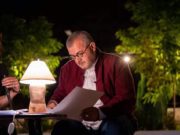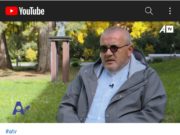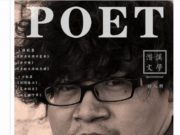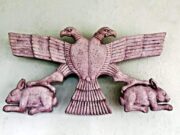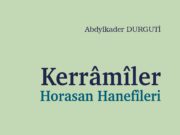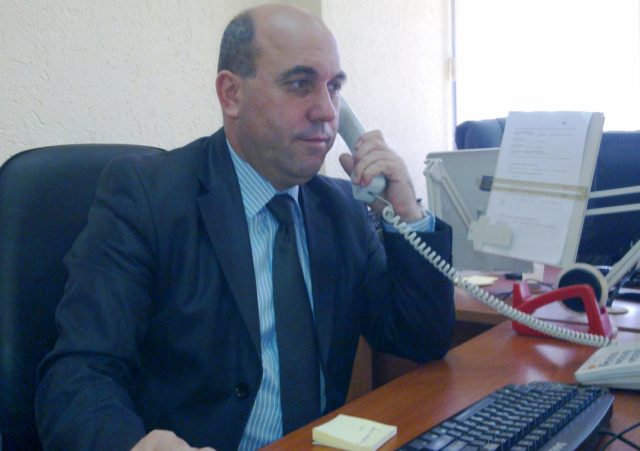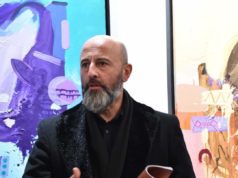Mr.sce. Bedri Zyberaj
The bridge as a literary archetype
Introduction
Southeastern Europe represents one of the four most important regions in the framework of the cultural European entirety regarding the greatness of the folklore that has produced during its history.
The reasons of this productivity, not only quantitative, but also qualitative, lie in the specific circumstances in which the peoples of the region have been forced to live, from the distant past up to the modern days. Any studies trying to shed light on these reasons should go back to the Paleo-Balkan times to the Greek antiquity and from that on to the subsequent historic periods, when various tribes and peoples, who created a suitable terrain and “a field of cultural exchanges” not only for the local peoples and cultures, but also for those from different parts of the old world, rushed towards the Balkans.
We set as a necessary boundary the Paleo-Balkan, Pelasgian-Illyrian and especially the Greek antiquity period, because in the Illyricum of that time mythology, literature, philosophy, and culture which we now label as being from ancient Greece, thrived, and which later on intertwined with the monotheistic religious doctrines of Middle East, with a special emphasis on the doctrine of Christianity. Later on these created a symbiosis which would serve as the foundation of what is today called European civilization in most cases, or more rarely Western civilization. So in this symbiosis, should not be excluded the previous elements dating from the Pre-Hellenic pagan period neither the various mythologies of the peoples of these expanses, especially of the Illyrians, Thracians, Greeks and later on of the Slavs of the South, who at times have lived in harmony among themselves and at other times have been forced to live in opposition with one another.
Even the spiritual values of these peoples have come to life sometimes being part of a bigger harmonious entirety, and sometimes being in a position and on a mission which excluded what the others had created, not with the goal of challenging the others, but trying to differentiate themselves, by trying to create something which is authentic, original and special.
Precisely in this flow of efforts and progress has been created the folklore of the Balkans with all that diversity of themes, ideas, motifs and with all that multitude of forms, which, all together give this folklore the value and the importance of an invaluable and useful treasure at the same time.
Numerous aspects of this socio-political and historic context have by now been analyzed and crystallized by the folklore. Thanks to the studies which have been done in this direction, have been crystallized numerous phenomena of the folklore of every nation separately, but also of the folklore of the Balkans in general and have been illuminated and crystallized many things that this heritage deserves today as a special part of the world culture.
It is known that the interest of the European scholars in the folklore has begun with the arrival of Romanticism, in the second half of the XVIII century, initially in England and later on spreading all over Europe. It is exactly at this time that originates the interest in the folklore of the peoples of the Balkans.
From that time and up to date the summary, selection and the systematization of the greatest part of this folklore, has been made, not to say that it has all been summarized and systematized.
In the framework of this folklore, there is a special cycle of songs, which have been created centering on the motif of human sacrifice and which have to do with immurement.
These songs carry different labels, but they belong to the type of ballad as regards their literary typology. Together with the Ballad of the promise, of resurrection, of the dead brother, which in the scientific terminology is called the motif of Leonora, the ballad of immurement, or of the inauguration as an Albanian scholar calls this type of songs, represents one of the best creations, “the oldest and the most spread” of the Balkan folklore. These are two of the pearls of this folklore. It is precisely their artistic beauty the main cause that has led many nations (about 20) to claim authorship over them, a number which folkloristic has narrowed down to only 6 of them.
During the analysis and examination of this material we will keep in mind what Raskin has said: “The great nations write their autobiographies in three manuscripts: in the book of their works, in the book of their words and in the book of their art. We can’t understand any of these books if we do not read the other two, but of the three of them, the only who would deserves trust is the last book” . That is to say the book of art.
The bridge, the castle, the church, or the monastery
The songs with the motif of human sacrifice or of inauguration are common among the peoples of the Balkans . The song centers on two motifs which follow one another. Firstly is the motif of building and then comes the act of sacrifice as a necessity to accomplish the first act. This ordering expressed by means of the philosophical discourse can be interpreted as a causal relationship between these two acts.
A thorough explication of the legend has been carried out by the scholar of Kadare, Tefik Çaushi. This explication is made possible through the conversation that the monk Gjon Ukcama, a representative of the popular consciousness, has with a foreign bridge specialist in the novel “The three-arched bridge” of Ismail Kadare. The monk tells the foreigner who was dismissing the essential values of the legend: “The real essence of the legend is the idea that on the foundation of every great work or action has to be sacrificed something and that this idea is superb and is found in the mythology of several nations”. So, in a few words, this is the philosophy of this ballad. Great works require great sacrifices.
The motif of human sacrifice is an ancient mythological, Biblical and Koranic motif, which is found in many peoples of the world. As such it is found also in the literature of the majority of the peoples of the Balkans. But there is a difference, in the Albanian folklore in particular, it is not found for the sake of invasive activities and goals as in the case of Ifigenia, but for the sake of a construction. The person who offered as sacrifice in the traditional cultures of the peoples of South-Eastern Europe is sacrificed for a great work, which is a Bridge, a Castle, a Church, or a Monastery. So, the distinction lies in the fact that in the peoples of the Balkans we have to do with a sacrifice which is not restricted only to the sacrifice considered an omen of good luck for a punitive expedition as is the case with the Greeks when they set off to fight the Trojans in the “Iliad” of Homer, but it is done to build something and that, by walling in a human being on the foundations of the construction, which is expected to be realized as a project and as a practical action of man over and with the stone.
The Tower of Babel, the Wall of China, the Pyramids, the Bridges, the Berlin Wall and other like these are the real big constructions of mankind in which man, due to his own activity over the stone has given it the desired shape and then the same constructions have drawn the attention and provoked the curiosity of various creative artists. The reason of this interest can be explained with the fact that mankind, throughout its entire history of development, has continuously striven to give a content as human as possible to the world which surrounds him, including here the minerary world, be it by acting over it initially on the physical aspect, or be it by contemplating it as an aesthetic object through his creative consciousness.
These are the most valuable constructions about which have been sung songs in folklore and to which have been dedicated special poems and novels. But, acknowledging the fact that those are real constructions with their own known history, the artistic creations about them, irrespective of the generalizations that writers with their talent have made, are almost all distinguished by the metonymic language.
It does not happen in this way with the popular Albanian ballad of immurement and with that of some other peoples, with some exceptions as in the case of the Serbian song “Zidanje Skadra” or “The bridge of Drine” of Andriq.
All these are distinguished by the rich and metaphoric language, the strong emotion and especially the feeling that they create in the receiver.
An issue which we face when we look at these songs and at all their twin songs within a language or several languages, whether we like it or not, we should try to answer, is the dilemma which is the real construction in which the sacrifice took place. It is understood that here we have to do with the artistic truth, because as we saw above, in the songs with this theme we see several such constructions: bridge, castle, church, or monastery.
When it comes to selecting one of these constructions by the aesthetic consciousness of a certain community or of an entire entity, then it must be specified that the cause of selecting and of deciding on one of these constructions has its own real vital reason, experience which is aesthetically engraved and at the same time, thanks to this aesthetic act takes place a phenomenon which is the function of attesting the different and originality. The aesthetic act of this level shows a degree of maturity of a certain ethnicity and its power to distinguish itself from the other also in this aspect. This distinction should not be understood as a challenge, but as a contribution with a double function: the first in the direction of creating the special identity and the second for increasing and expanding the aesthetic range of mankind.
Trying to resolve this dilemma, we arrive also at the given testimonies, which have conditioned the decision on this or that construction. In this way we arrive at the same time at a more logical explanation as to which one of these is older and more acceptable as an aesthetic code.
Since the podiums of the kind of churches and monasteries are constructions which have acquired importance especially after the consolidation and expansion of Christianity throughout Europe and the world, it goes without saying that their temporal existence does not go beyond an existence of more than 20 centuries. Then, there is also another reason which undervalues the artistic truth that the sacrifice takes place on the foundation of the church or of the monastery. In Christianity, it is the figure of Jesus Christ himself the one which has been sacrificed for mankind and it has made that by being a unity of the Holy Trinity: The father, The son, and the Holy Spirit. Every other sacrifice, willingly or reluctantly, be it on the foundations of some religious object would be neither logical nor likeable nor acceptable, because it would constitute an act of heresy. If a person would be sacrificed as it happens in the ballad, be it in the church or in the monastery, it would be a challenge to the figure of Christ, and the act as such is heresy. Christ cannot have an equal.
In this way we come to the conclusion that the church and the monastery are excluded as being a possible construction, and are left only with two other: The castle and The bridge.
As such they are found also in the Albanian folklore and with a rare beauty. And the only thing left to do is resolve the dilemma presented before us- on the foundations of which one of these constructions did the sacrifice take place.
The scholar Shaban Sinani has written more concretely about this and has given it an answer that according to me, despite the strong logic of some arguments, do not lead us to the truth regarding this issue. So, when it comes to the human form of the minerary world in the Albanian folklore in particular, but also in the Balkan one in general, that we could search based on the model of the archetypical critique of N. Fray, then we would have to specify that when we look at this issue more in depth, the construction of the Bridge results to be the archetype of this creativity.
The minerary world – The bridge
When it comes to the motif of immurement, among the Albanians, the songs with this theme are found as songs about the castle of Rozafat and The sacred bridge in the North or The bridge of Arta in the South. The earliest written testimonies about one of the constructions are about the castle of Rozafat, which come to us by the Albanian humanist Marin Barleti. But, here we have to specify a truth. Barleti does not mention the sacrifice, up to the point in which he talks about some fragments “in the popular language” regarding the construction and the re-construction of the city of Shkoder. He relates of only the first founders of Shkoder, Roza and her sister Fa, who “reigned for a log time wisely and prosperously.” This testifies to two things: the twinning of the song of immurement about the castle of Shkoder, which we find in the Albanian folklore, and in the Serbian one about the city of Shkoder, are later creations than the XVI century.
Regarding this issue one detail should be corrected. Among the Serbs the song is entitled “Zidanje Skadra” , an act which has to do with the construction of the entire city and not only of its Castle, as Barleti displays the evidence. Apparently here we have to do with a distortion of the Albanian legend of immurement, where it is kept only the name of the city, but not the real content regarding its more essential parts.
The “inaccuracy” of the Serbian ballad is also revealed by the fact that, the act in it is attributed to some historic figures, who have lived in the XIV century. If we approach it from the historic aspect, as it would be logical to do in this case, then we have to stress the fact that when it comes to the time of the creation of the city of Shkoder, the historic evidence points to a very much earlier time period than the one which is given in the Serbian ballad. As a city, Shkoder is known since antiquity and in the middle of III century B.C. was the first Capital of the kingdom of the Illyrian tribe of Ardiaei. While the princes of the Serbian ballad who seemingly build the city (Shkoder in this case) have lived in the XIV century.
To resolve this clash of dilemmas and claims there is also another element to be analyzed, and this is the element of goal and of function which the object for which the sacrifice is offered, carries out.
Since the bridge, the church, the castle, and the monastery as constructions contain in themselves the unique element of goal and functionality, the city, as we find it in the Serbian ballad, does not contain these elements. It combines in itself a multitude of buildings, which likewise have a multitude of functions, which by themselves do not represent the logical and sufficient motif to be built by three brothers or princes, in a certain period. Apart from this, in this case the initial element of tormenting the particular spirit is missing, as it can be supposed to have happened to the river, which by putting a bridge on its back is provoked its entire being and anger follows. From such a reaction comes an artistically justified action, that of destruction, since no one is sacrificed for the sake of this soul.
From this it follows that, despite the fact that the earliest written document about the castle of Rozafat in Shkoder comes from Marin Barleti, about the castle that later a song is sung with the motif of immurement, the bridge is the one on whose foundations a human sacrifice is offered and not any other construction. The bridge as such is found not only in the early Albanian ballad of immurement, (also in those of other peoples) but even in later artistic creations. The timeline of the appearance and re-appearance of the bridge comes even to our times. This finding is valid not only for that part of the literary work which is included in folklore, but also in a number of prominent writers of the national literatures of these peoples. Here it is worthwhile to mention three illustrious manes: Ivo Andriq with the novel “The bridge of Drine”, Ismail Kadare with “The three-arched bridge” and Rexhep Qosja with the play “Beselam, why am i being immolated”.
In conformity with the definition of Fray of the archetype which represents a “typical image, or repetitive …a symbol which connects a poem with the other and in this way contributes to the equalization and integration of our literary experience”, The bridge represents the human shape of the minerary world in the Albanian folklore and literature, because it represents the most typical or repetitive image of a symbol which connects a song with another, a song with a poem, a song with one or several works, and in the end a work with another work of a literature, and all of these by connecting them with their twin sisters in other literatures.
But, what does the notion “world” that we use in these cases, mean or express?
By the notion “world”, in the lateral meaning of the word should be understood a special subdivision of an entirety of the environment, in which man throughout his past, has been forced to eat and live as a biological, emotional and rational being. One of such subdivisions is the minerary world which distinguishes itself from the other two worlds: the flora and the fauna.
The bridge as an artistic image is found in the early Albanian legend, but also in the Greek one, and later we will find it as an image continuously repeated and for a long time, to arrive to our days. This is useful especially for the popular literature and for the written Albanian literature.
Hundreds of years later, in this literature is precisely the image of the bridge which comes to us in another song and which belongs to a totally different time and reality.
The bridge will repeat itself, although now not as an ideated project as it was in the early Albanian legend, but as a new reality.
In the song of the Ottoman foot soldier that we find in the Albanian folklore, the bridge becomes a point of reference to the division of space and the creation of the idea of the big size of spatial distance. Of a distance beyond which, the fate has hit an Ottoman foot soldier and has sentenced him to death. Consequently, with this repetitive image, the bridge denotes a distance which initially becomes the reason of a drama of the fate of the individual, who was dying away from his birthplace and country, and then of his family and beyond.
“I must leave you, fellows, leave you
Beyond the Bridge o’er to the Kaaba.”
The Albanian Ottoman Foot Soldier in this case, gives through these verses the message of this death in solitude in those deserts of Arabian latitudes. It goes without saying that his fate was shared by hundreds and thousands other Ottoman Foot Soldiers of the latitudes of the Balkans, Serbs, Bulgarians, Romanian, Bosniaks, Vlachs etc.
But, when this is seen in a bigger prospective than the Albanian spiritual creativity, which means Pan-Balkanic, then we see that the bridge represents the most characteristic topos of other particular literatures of the peoples of the Balkans as well.
As we previously said, it comes to us also in the literary work of three biggest writers of the Balkans of the previous century, who under the pressure of the folklore have written three special books: Ivo Andriq (1892-1975) the novel “The bridge over the Drine”(1945), Ismail Kadare the novel “The three-arched bridge” (1978), and Rexhep Qosja the play “Beselam, why am i being immolated”.
Differently from the ballad of the Serbian folklore, in which as we know it is told about the construction of an entire city, Andriq, in the novel “The bridge of Drine” is focused only on The bridge, which as it is underlined by the literary critique of up-to-now represents “the main character” .
But, as in the Serbian ballad also in “The bridge of Drine” the historic element continues to be present. The bridge of Andriq has a story of construction which serves as the epicentre of the development of all the events in the novel. Differently from the bridge of the Albanian ballad, it is a concrete construction, despite the fact that even about it are told different hearsays and legends. The legend is present, but not as something reasonable, in the same way in which it is not reasonable in some variants of the Serbian folklore, when it is necessary that two children be sacrificed.
However, because of the mastery of this writer, this is fully overcome and supplemented with new innovations. Now in the novel, the carved stone is a symbol of continuity and of the strong and durable man. The combining of this continuity with the past and the contemporaneity of the author has forced him to combine the legend with the chronicle, the legend with the historic, and this symbiosis has given the novel the physiognomy of a real historic chronicle.
In this case, the motif of sacrifice and of the building of the bridge of the popular literature is almost avoided and instead of the metaphoric language predominates that of the metonymy. The first because of the fact that the man who came up with the idea of building it is a real historic figure and the exact time of the beginning of its construction is known (1516); the second, because of the way in which are conceived the events which develop about and around it; the third, since we have to do with a construction which has a concrete history, a pronounced note of historicism pervades these events, which despite the predomination as a way of operating procedure, during a period of more than 4 centuries (1516-1914), nevertheless does not transform the work into a genuine historic chronicle, but remains a genuine literary story.
Something similar can be said that it has happened also in the novel of Ismail Kadare “The three-arched bridge”. But in this we do not have to do with a historicism of the subject, as in the case of Andriq.
Contrary to the demythologising process and to the re-gaining of semanticity as in the first case of the subject of immurement, “The three arched – bridge” of Kadare represents a creation which for the time marks a special moment as a literary fact. The legend in the work of Kadare is more preserved originality-wise, more functional and more fresh as an aesthetic operating procedure, despite the fact that due to the re-working has been re-gained semanticity. The re-gaining of semanticity consists in what the scholar Tefik Çaushi has labelled as “explanation in a new light” . It functions as such not only before the immurement of the sacrificial human being on the foot of the bridge is carried out, Murrash Zenebishta in this case, but also after this moment placing itself “at the service of a message which has nothing to do with the legend” . The fact that the image of the bridge is repeated, again, has its own objective reason of real life.
If we take into account the time of creation and publication of the novel, the year 1978, which was the time that marked the climax of isolation of Albania, then, we cannot but think that the writer strives to reach the other side, or the other shore (maybe of the Adriatic), through the language of art in this case, with the goal of penetrating inside the isolation within which, at this time, were forced to live Kadare and his entire nation.
Our literary critique dealing with this issue in the work of Kadare, has found that the issue of the dilemma which we answered above is felt in the work of Kadare also. “The dilemma between the bridge and the castle is as shocking as it is in the history of the Albanian people” – the scholar Shaban Sinani has declared regarding this issue. In the most mature artistic form this dilemma is expressed in the novels “The castle” and “The three-arched bridge”, which if they are seen from this point of view it seems to us that even these are competing among themselves, despite the fact that they are a continuation of each-other.
He, who created the castle of endurance in the conditions of the grip of animosity, could not allow himself to remain without a bridge, alone and separated from the rest of the world. Kadare realized this idea by creating “The three-arched bridge”, considered in most cases as an act of demythogising the legend” ,-as our literary critique has concluded regarding this issue.
Something similar will happen also to another name of the Albanian literature.
Rexhep Qosja, in the same period, will put to test his abilities as a writer also in the field of drama, by publishing three of them under a common title- “Naked Myths”.
One of these, “Beselam, why am i being immolated”, has been created drawing precisely on the Albanian and Balkanic myth of the immurement of the woman and as such “has served the author as a formal framework and as a scaffold for the structural construction of a drama”
In the subject of the drama itself by now more elaborated and re-systematized in harmony with the general development of mankind, it is felt the dilemma: the bridges or the castles, although the writer satirizes the last ones by evaluating them “as symbols of seclusion and isolationism and seeks to build bridges as symbols of communication of man with man” – as the critic Bajram Krasniqi concludes. This is how bridges are in real life and this is how they are treated by the literary art.
When it comes to this issue, it must be specified that despite the fact that some critic thinks that the castle with its later variants like the towers , has priority and coincides with the vital truth of the Albanians, in this case i think that the bridge continues to have priority as much for the symbolics as for the weight it carries as a construction with an immolated person inside it.
Since the Castle like the City, which Fray specifies as the human form of the minerary world , in “The Bible”, represents an ending which might be reasoned for the time of homogenization of the social groupings, The Bridge is an object which strives to connect two river banks, two different sides, not to say contrary ones. Because of this goal and function that it performs, it transforms itself into an instrument serving to overcome divisions. As such, the bridge has taken priority in two different periods: the first is the time when man has expressed the initial interest to get out of himself and out of the small community in which he has lived. At this stage man seems to have been interested to gratify his curiosity to see the other side of “the river” and when such a thing is achieved, then comes the stage of homogenization. But even this stage comes to an end very quickly and not being satisfied with the division that had resulted from this homogenization, and with the imposed divisions also, starts again to express his interest to establish connections among the different groups which had by now achieved homogenization within their species, and were trying to establish connections with the others, meaning to open up to the others. And why not with the other part of theirs which had violently remained on the other side, another characteristic of the Albanians in particular and of the Balkans in general.
Since man could achieve this thing only through the bridge, it, preserves its character and weight throughout history, being continuously present in the folkloric creativity of each people separately, but also in the general folklore of the peninsula. Such continues to be this construction also among a considerable number of particular writers of the literatures of these peoples, but apparently, being more authentic among the Albanians, continues to be more present among the writers of this entity than among others. Apart from Kadare and Qosja, in the Albanian literature, there are other poets who have highlighted in their poems the bridge as a poetic image. To illustrate this finding we mention only two or three names.
We find all the timeline of the interest in bridges synthetized in a poem by Koci Petriti, in 4 verses
“I see all the bridges,
From the bridge of Bushtrica,
Here is the bridge of Kaaba
Here is the bridge of Drashovica also.”
In the last decade of the last century, in the Albanian folklore, re-appears the image of the bridge, drawing totally on the ancient myth of sacrifice and immurement.
Thanks to the autochthony of the areal of its origin, now, due to the new socio-political context, the former legend is re-worked and acquires new meaning, with new colours which belong to a new background of events and circumstances. This time, as it has happened in a former twinning of its, the geographic location is combined with the name of the White Drin river, something which according to our opinion seals definitely the truth about where (in which folklore) lies the origin of conception and creation of the legend of immurement.
“Where the Drin river flows under a bridge
We have immured a bride in stone
It saves the bridge from collapsing
And Drin not to run dry.”
Based on the archetypical literary critique regarding this issue we can conclude that the bridge represents the most long-lived repetitive image and as such represents more faithfully than any other construction the human shape of the minerary world. The truth about the human sacrifice for the bridge is the artistic truth which cannot be questioned by any other pretention, because it is the truth which is written and originates from the book of art.
It carries the freshness of the former beauty of the legend of the immurement any time it appears.
After all this, we can say that the bridge represents a special archetype, in which has been incorporated naturally the mission of our man throughout the millennia.
As such, it, contains in itself the most human part of this mission, which has been at the service of all. In order for our visualization of this image to be more precise, we should also stress another fact, which could not escape the poetic observation of the artists: the frailty of the constructions of the bridges which is explained by the laws of architecture. This fact has been immortalised through the language of art by Adem Gashi in the poem “We have set off”
“Architects say:
All the bridges sway a bit” -says he in a verse of this poem.
So, they are the most sensitive and frail constructions in times of earthquakes. Even in times of war, they represent the first targets to be destroyed. A testimony to this are also the recent wars in former Yugoslavia, where the most prominent was initially the destruction of the bridge of Mostar (1995), and then the most recent war in Kosova, where in the framework of the NATO air bombings of the Serbian targets, a very important kind of targets to be hit by the NATO airplanes were precisely the bridges.
Both, the earthquakes and the wars, have been numerous in the Balkans and amid the peoples of the Balkans in the past. That is why, the construction and the destruction of the bridges is done continuously by describing this process within 24 hours, a poetic expression which is materialized through the figure of litotes: building during the day, collapse at night. But there is something quixotic in all of this.
It is only about a segment (of the genuine art) of the life of the Albanians to establish the links among the different, not to say among the contrary things, which through the poetic language has been synthetized and articulated from Fan Noli in “The anthem of the flag”:
“Flag which gives birth to Saint Constantine,
Conciliates Islam with Christianity,
Declares brotherhood among the religions,
Generous flag for Mankind.”
This seems not only a bit quixotic, but furthermore it represents a Sisyphian effort, which repeats continuously without ever reaching the end, which has been articulated by Bardhyl Londo in the poem “Bridges and river banks” through these verses:
“We are like two banks of a river,
Eternally facing each other, eternally divided,
At night we build a bridge in our dreams,
During the day we remain strangers as before.”
Conclusion
From what was said above we come to the conclusion that The bridge, in the folklore of the Balkans in general is the human shape of the minerary world and the main literary archetype, which has a long timeline of the preservation of this feature. As such it has continued to be preserved also in the written literature. That is why, time after time we find its image serving as a liaison element between the times and historic experiences. We should look for its causes in historic and social circumstances, in which the Albanians, but also the other peoples of the Balkans have been forced to ideate, formulate, develop, and preserve their existence from antiquity to our days.
The Balkans throughout its entire history, has been a region as continental as it has been a mediterranean one; was a Hellenic place to the barbarians in the cultural aspect, as it was barbarian to the Hellenic world in antiquity; was a region of the East to the West, as it was a region of the West to the East. Its economy, psychology, culture and history have developed in close relation to the economy, psychology, culture, and history of other countries of the Balkans and of the various rulers who were able to conquer it, for different periods of time.
All the political, religious, ideological and military macrodivisions have pervaded this area of the European continent. Among different ethnicities of this area like the Albanians, Hungarians, Romanians, Greeks but also among the Slavs of the South which include the Serbs, Slovenes, Croatians, Bulgarians and Macedonians, these divisions of different reasons and times have resulted in microdivisions, where one part of it was the periphery of an epicenter of the big division, whereas the other part was the periphery of the other epicenter. To the local residents this was something painful and they have never come to terms with this fact. For the sake of their own other part, which was the periphery of the other epicenter, they have continuously aimed at grabbing the other part of the division, the other bank of the river respectively.
It goes without saying that, in this effort there were difficulties which have been the result of obstacles that the epicenters of the big divisions have put up for their interests. The local residents have hurt their own side and have often suffered, longing for the other side of the river bank. The bridges which they have aimed at building, have been unwanted by the epicenters, that is why they have been destroyed. On the other side, the local residents, have not imagined their existence without their own part which was lying on the other side of the river bank, and this thing, not rarely, have led them into conflict not only with the one epicenter, but at the same time with both of the epicenters. This conflict has been accompanied by victims. These were the human sacrifices that the local residents offered for the sake of themselves and then these resulted in human sacrifices for the building of bridges which connect river banks, different sides not to say contrary ones. To immortalise this service that they did to themselves and to all of the mankind, the local residents chose the language of art and invented such legends as that of the immurement.
This immurement was carried out through the figurative expression on the foundations of the bridge, by walling in a bride who leaves behind a son and she weans him with her breast every time he cries. Now, the effect of this metonymy can be commented on for this aspect also. The child, in this case the son, serves to give the act of human sacrifice and immurement another meaningful dimension, – that of the bringing together the times. In this case the future. And precisely this thing makes this act meaningful and gives value to the immurement. Otherwise it would make no sense for none of the actors to carry out their act: neither the older brothers to break the promise and turn disloyal and create the complete panorama of this spiritual institution with special importance in the Albanian customary tradition, neither the small brother to keep the promise, neither the bride, to accept her immurement and immolation consciously.
Prishtinë,
February – March 2012
Bibliography
Barleti, M., (1967): The siege of Shkoder , Second annotated publication, State University of Tirana, Institute of History and linguistics, Tiranë.
Çabej, Dr. Eqrem, (1975): Language Studies V, Publishing House, Rilindja, Prishtinë
Clark, K., (1999): The civilization, The house of the book, Tiranë.
Çaushi, T., (1993): The literary Universe of Kadare, EUROPA publishing house, Tiranë.
Fraj, N., (1990): The anatomy of the critique, Rilindja, Prishtinë.
Gashi, A., (1990): The objective Reality, Rilindja, Prishtinë.
Haxhihasani, Q., (1955): Legendary popular songs, Institute of sciences, Tiranë.
Kadare, I., (2002): The autobiography of the people in verses, Tiranë.
Kadare, I., (1992): The Pyramid, Tiranë.
Popular songs of the national renaissance (1978), The Albanologic Institute of Prishtina, Prishtinë.
Popular culture, Branch of Ethnology, Tiranë.
Noli, F. S., (1988): The work 1, Rilindja, Prishtinë.
Petriti, K., (1990): The poppies, Rilindja, Prishtinë.
Qosja, R., (2010): The work, Volume XII (Naked Myths), the Albanologic Institute of Prishtina, Prishtinë.
Sinani, Sh., (2006): Bridges and castles, Argeta-LMG, Tiranë.
Tirta, M., (2004): Mythology among the albanians, the Academy of Sciences of Albania, Institute of
Zihni Sako, Z., (1984): Studies on the folklore, the Academy of Sciences of P.S.R of Albania, Institute of popular culture, Tiranë.
The following links have also been used:
http://riznicasrpska.net/knjizevnost/index.php?topic=595.0
http://www.maturski.com/citaonica/58-ukratko-prepricane-lektire/264-na-drini-cuprija-ivo-andric.html
http://www.letersia.fajtori.com/Letersi/Moderne/Ismail_Kadare/dilema_ndermjet_ures_dhe_keshtjelles_analize.php
http://www.youtube.com/watch?v=ufsqOGXPi4o
http://fryma.blogspot.com/2009/10/bardhyl-londo-ura-dhe-brigje.html#!/2009/10/bardhyl-londo-ura-dhe-brigje.html
Sali Bytyçi
Bedri Zyberaj
UNYIELDING POET
Agim Vinca – nosit lasgushian
These are special days for city of Rahovec and its surroundings. This is the second edition of International Festival of poetry that has enabled a presence of a huge number of poets from regional and various countries all over the world to be guest at this city. According to Albanian tradition and customs the home is considered to be the property of the owner and the guests. Therefore, the honorable guests welcome to our city to enjoy these days, Rahovec city shall be your home for the time you shall stay here!
One century ago, at this city there was a hero who uses to live here and due to rebellious spirit he had the Ottoman forces at that time came to arrest him. Their senior officer according to the lyrics that is going to be dedicated to him later on, before they proceeded to Rahovec city he told to his safeguards:
Get ready my guards
We are going to Rahovec city
We shall drink wine and alcohol
We shall drink coffee and smoke the cigarette
Halil Hamza shall be surrounded
Dear guests, you who have brought the verses with you, since tonight you are here in Rahovec, there will be a plenty of wine and alcohol (raki). The verses you have brought and those three elements of this night create good atmosphere and a beauty of Eden garden to Rahovec city. Tonight, Dionis, Homer, Anakreon, Safoja, Khajami, De Rada, Naim, Pushkin, Lasgush, Agolli and many other famous poets shall be jealous on us; and we cannot ask something else from them except to be quite because whatsoever we are going to do to night by writing verses and drinking wine and brandy it is nothing more than continuation of their deeds they have created while they were alive. Therefore by reminding them we are telling them to be quite because tonight even they are amongst us!
II
At this beautiful and fabulous environment, where a Dionysian atmosphere prevails, to be asked to represent a poet before poet’s auditors it is an extraordinary estimation which, itself carries the honor and responsibility.
Tonight, as such, to be assessed are two of us, the authors of this writing, Sali Bytyqi and myself Bedri Zyberaj, a joint work that I am reading it now.
Being born and growing at these areas, respectively at this city, we have completed the secondary school, we the co-authors, through this joint point of view we would like to prove one more thing.
Only both of us together we could carry the value of respect and gratitude for a lovely poet, those who are here and have come from all of the world, those who have respected us with their participation to this second edition of Poetry Festival.
As professors deserves for what their students achieve, honorable guests, even tonight at this second International Festival edition of poetry “Poetry and Wine”, there is a person that indirectly has its merits for this festival. This is a professor of Fahredin Shehu, of Sali Bytyqi, my professor and some others who are present here and professor of many others who are far away from this place! The professor who for this year has been selected to promote his opus within the festival is the poet, researcher, critic, publicist, translator and historian of Albanian language Mr. Agim Vinca – our then professor and our current precious friend.
Professor Agim Vinca has born on 22nd May 1947 in Veleshte of Struga – Macedonia; he has completed the primary school at his homeland, whereas the secondary school at Struga. He has completed the studies for Albanian language and literature in 1970 at University of Prishtina, where he has also obtained a post-graduation and PHD degree. In 1972 he has started to work before the University of Prishtina, initially as assistant and later on as lecturer of a subject – Albanian literature today – poetry.
At this year he has published the first poetry collection.
As a creator, at his early age, he has been nourished with Pogradeci lyricism and later on when he has come for studies, especially during his time as pedagogue of University he has focused on north epics. Thanks to this interaction, especially thanks to his talent and commitment the name of Agim Vinca later on has been marked as a creator and an individual who possess various sensitivity that were called as a beauty of whole Albanian spirit. This sensitivity, for us who have read his creation and saw (and other who shall read it later) at his whole poetry, but a bit more articulated and more expressive at the one titled Albanian Rhapsody:
Were you at the source of black Drini?
At Saint Naum in the south
Have you seen how its water flows?
As a soft lyrical songs
Were you at the source of white Drini?
At the cursed mountain between the rocks
Have you seen how its water blows?
As a young hero songs
To conclude with the last verse:
Have you seen how our rivers run?
Through the mountain gorge
Have you heard their melodies?
The Albanian Rhapsodies
The author of these verses, the first book of his verses, as we mentioned above titled ‘Fenix’ has been published in Prishtina in 1972.
At that time poet Agim Vinca, represented his created credo that he shall remain faithful till the end:
And my verses do not roam on the sky
Because I drunk blood at this land
I fell in love on stones and clod
And never hurt a men’s proud
At these verses it is clearly seen the disagreement of a poet with a huge number of Kosovo poets at that time, who despite getting deep into ‘symbols forests’ (Echo) they run far away from the life, from life practice. The opposite would happen with Agim Vinca.
During the time of at least half of the century when he has published the first volume with poesy up to now Professor Agim Vinca published five other volumes with poetry as: ‘The path of longings’ (shtegu i mallit) (1975), ‘A man aside the river Drini’ (Buzedrinas) (1981), ‘The patch and the dream’ (Arna dhe ëndrra) (1987), ‘Bad time for Lirka’ (Koha e keqe per Lirken) , (1997), ‘The psalms of the root’ (psalmet e rrenjes), (2007). Since he is a poet who never wanted to disengage his poetry sensitiveness from real life, in four poetical volumes, from the total number of six, published during the 4 decades, he has marked four periods: with his first poetry volume ‘Fenix’, during the seventies he wrote the time or revival of Albanians in former Yugoslavia; during eighties with the volume ‘The patch and the dream’ he expressed failure to realize the dreams because they start to dismantle (the signs of dismantle are patches ); with the ‘Bad time for Lirka’ the time Albanian went through in former Yugoslavia during 90; with ‘The psalms of the root’ the time of frustration in 2000; whereas with the poetic volume ‘A man aside the river Drini’ he marks the geography of his poetry.
The time when Professor Agim Vinca wrote was pretty difficult. Nevertheless he successfully overcomes the difficulty. At the time when the Albanian poetry of Kosovo was swimming at the abstraction forestry and sterilized watertight, whereas the one created in Albania more and more was subjugated to a political dictatorship, as poesy that was supposed to line with the labor class on building of socialist society, namely at the time when these two branches of Albanian poetry were distancing from one – another the poetry of Agim Vinca appears and stands between them. Luckily this poetry was not closed to abstraction language and it was not a subject of ideology, but it turns into a verses for life, for Albanian men of a time, for his dreams, for love, for betrays and his frustrations.
It means that it is a poesy that bursts from the place where the creator lived; at the same time it becomes popular at this region, on articulation to recall his men, dreams and his vision for the future. This is poesy of Agim Vinca that makes him a special poet from the rest of Albanian creators who lived and crated in Kosovo and all over Albanian territories.
When we discuss about poetical profile of this poet we ought to emphasize that since the first compositions the poet Agim Vinca has rebuild the myth of revival and resistance. The first has been implemented though ancient mythological figure of Fenix where he has given the title of his first composition with poetry; whereas the second the myth of resistance with figures as castle, rock, river, shore, trunk, root etc., the metaphor of the symbols that describes the whole poetry of this creator and which are in function of this myth.
Except that he has created the original deeds on verses, Agim Vinca is the author of some anthologies, as: ‘From contemporary Albanian poetry in Yugoslavia’, Iz savremene albanske poezije u Jugoslaviji” (Nga poezia bashkëkohore shqipe në Jugosllavi) (Sarajevë, 1985), ‘ Open song’, ,,Kën¬ga e hapur – Antologji e komentuar” (Commented anthology) (2005), the first anthology of this type at Albanian literature, and ‘Motherland Muse’, ‘Muza e Mëmëdheut’ (Njëqind poetë për atdheun) (hundred poets for homeland) – Antologji e poezisë at¬dhetare shqipe” (2012), that has been published during the celebration of hundred anniversary of declaration of independence of Albania.
III
Except as poet, Professor Vinca is distinguished as researcher and literary critic. Regarding these aspects he has published ‘Aspects of our critic’, ‘Aspekte te kritikes sone’ (1977), ‘Access’. ‘Qasje’ (1980), ‘The structure of development of today’s Albanian poetry’,,Struktura e zhvillimit të poezisë së sotme shqipe (1945-1980)” (1985),’The hours of poetry’,,Orët e poezisë” (1990),’Albanian literary alternative’, ,,Alternativa letrare shqiptare” (1995) republished two more times: in 2005 and 2009, ‘ The Course of literary theories’ ,,Kurs i teorive letrare” (2002), republished even in Albania with title ‘Pantheon of literary ideas’,Panteoni i ideve letrare”, ‘Unbroken thread’ ,,Fije të pakëputura” (2004) and ,,(Po)etika e fjalës” ‘The ethic of word’ (2010). Intending not to minimize the value of other deeds from this aspect we ought to distinguish the monography ‘The structure of development of today’s Albanian poetry’,,Struktura e zhvillimit të poezisë së sotme shqipe (1945-1980)”, which for our opinion, not only for the period when it was published, but still, even today, it is hard to exceed despite scientist approach, analyzing the poetry of in an integral manner as per synthetization, prejudice and conclusions exclusively based on artistic features that prevailed by creators on various periods and generations.
Even in the aspect of history and literary theories Professor Agim Vinca has provided his contribution. His book ‘‘The Course of literary theories’ ,,Kurs i teorive letrare” (2002), the second supplementary publication (2012), shall be of a big assistance for the students, but not only for them, on acknowledgment of literary theories from antique up to postmodernism.
As in poetry also at literary critics A. Vinca has the sense of measure, he avoids the exaggerations, speculations and as it is said by well-known Canadian critic Robert Elsi for him: ‘he is remarkable among others for sharp adjudgment’. This is a quality of writing of this author, a quality that not many our critics and prose writers possess.
Agim Vinca is a partisan of any literary theory, or some literary theories at the same time, as it happen with some of our critics who at any book they publish, at the title, they include the new theories or ‘new’ that are very visible and they cannot assimilate them. In an aspect of humanitarian sciences relatively new, as it is ours, not very rare it happens that literary theories now became old in the world, to appear at the scene as modern theories or as last theories. A. Vinca is conscious of these literary theories, as are hermeneutics, the esthetic of reception, semiotics, structuralism, post structuralism etc. He takes from theories what he needs, but never sees any of them as dogma, as theories given once forever and he becomes not the slave of any of it.
He sees the art as a live lecturing, therefore, even as a critic he has an active stand towards it. In other aspect what deems necessary to assess on critical writings of Agim Vinca is the care and the appropriate culture that he indicates towards the language. His critical discourse as none of any other researchers is described with a kind of lyrical color, such that can be extracted only by the ‘Basin of Pogradeci Lake’. This is the main reason why, in more often cases the critics of Agim Vinca are easily read and experienced and with the pleasure of reading of a lyrical poetry.
As a conclusion for this aspect we shall quote an opinion of a critic –Nasho Jorgaqi, who speaking for creating individuality of Professor Vinca, as literary critic and literary scholar, writes: ‘At Agim Vinca the passion of a researcher is joint with tiny sense and realistic of a criticism and the general abilities of a scholar. To this conclusion according to our opinion it can be adhered the mastery and charm of expression of a lyric.
IV
Publicity is another successful characteristic of Agim Vinca. Published deeds that belong to this aspect are: ‘Unstopped people’, Populli i pandalur” (1992), ‘Albanians between the myth and reality’, ’Shqi¬ptarët mes mitit dhe realitetit” (1997) and ‘The art of reaction’,,Arti i rea¬gimit” (2011).
In these works it is observable the readiness of the author to encounter the challenges that his fellows use to face, which were forced to live within the borders of former Yugoslavia. The anti-Albanian camping that has been resurrected especially after the demonstration of 1981, where it incited the spirit of a men, intellectual, the pedagogue and poet Agim Vinca and it has turned the fire of a polemist, a fire that never has been extinguished at him. Continuously he protected what was assaulted by others and the earthworm race within our existence. He was such when he signed the Appeal 2015, or when he defended the characters of our history as Luigj Guarkuqi and Hasan Prishtina, Ukshin Hoti and later on the KLA/UÇK, before and after the war in 1997-1999; the KLA/UCK soldiers persecuted and arrested by UNMIK and EULEX and the post war protestors and demonstrators, who as per irony, they bloodshed our roads even now, as at the time when we were at the monist system and they do not want to hear what is demanded.
The changes brought by demonstration of 1981 and especially those appearing at that time as consequence of dissolving a single-party system at Eastern Europe, at the counties that brought the progress of enlargement of rights and freedom of Albanians in ex-Yugoslavia, despite how paradoxical they looked like the result was the opposite.
While for everyone else, the fall of monism was taking its evil, for Albanians the time was running backwards. Not only the evils were taken away but the additional things have been brought where at the end resulted with a bloody war, so senseless because it was the war that tackled the XXI century.
After Rexhep Qosja, Agim Vinca was an intellectual who raised his voice at most and opposed the curses and assaults made to intelligence, language, literature, history and Albanian culture in general by Serbian politicians and intellectual persons, Macedonian and Montenegrin. Such one has been made these days, by re-actualizing once more the discrimination of Albanian language that has been prohibited to be use with the statute of International Poetry Festival, ‘Struga Poetry Evenings’, ‘Mbrëmjet Strugane të Poezisë” even though the place where this festival took place has the majority of Albanian population, 60% of it.
Agim Vinca could not stay indifferent at any time facing such situations. He reacted even at that time when such thing was dangerous. The writings of this nature on most of the occasions initially were published at the Ljubljana and Zagreb Press (Slovenia and Croatia) because the newspapers and journals published in Kosovo were considered heresy and the publishing was not permitted.
He was not silent in front of injustice that was made to his nation by others, but he shall not remain silent even at the time when these evil things would be made by his own people.
He kept the same stand even when he was the deputy minister of Education and Science at Interim Government of Kosovo or the co-leader of Education Science and Technology department, a function that he was forced to leave after 3 months, resigning due to disagreement with wrong politics of this institution , UNMIK segment, education, language and science at our country.
Being unsatisfied with discrimination of Albanian language he shall resign even from the post as a member of Steering Committee of ‘Struga Poetry Evenings’, ‘Mbrëmjet Strugane të Poezisë” in January 2005.
The immorality of state and politics officials, the abuse with power, social injustice and other phenomena that burdens our society, would be always on his focus to strike. This fact gives his figure a different dimension- a moral pillar of society, at the time when for our bad luck remained in a small number.
Due to these reasons he is confronting a kind of continuous refusal by political circles and cultural bureaucracy, those leading the educational cultural and scientist institutions of our country.
In this way Agim Vinca carries on his back ‘curse’ of being intellectual, a curse that always puts you with a power in a frontal position – opposing position.
Such vicissitude shall never break him; in opposite they shall make him stronger. Luckily Agim Vinca as a rare intellectual has hardened in such challenges and he became undefeated.
V
At the end since we are before a poetry festival, we shall go back once more to poetry. Agim Vinca as a poet took place in several poetical festival, starting with those regional character up to those with international character and in these occasions he has earned several prices.
At this occasion we shall count some of them; in May 1985, he took part on international literary festival ‘Poetical days of Sarajevo’, (Ditet Poetike te Sarajeves) where he kept the introducing speech dedicated to Albanian poetry: in august 1986 he participates at the international festival of ‘Struga Poetry Evenings’, ‘Mbrëmjet Strugane të Poezisë”; in July 1998 participates at the Balkan Festival of the poetry in Istanbul; in 2015 he was invited and participated at the International poetry festival ‘Live voices from Mediterranean to Mediterranean’ (Zerat e gjalle nga Mesdheu ne Mesdhe), at the city of Set in France etc. etc.
During these activities and similar to these he has been awarded with literary prices among which we highlighted: in January 2007 he wins the price for best poetry read at the literary hours of manifestation of ‘January flame ‘(Flaka e Janarit) in Gjilane city; in March at Elbasan in Albania with title, ‘Summer day roses’ (Trendafilat e dites se veres); on 21st October 2007 in Tetova city he has been honored with price ‘The days of Naim’, (Ditet e Naimit) for literary career etc.
In 2010 he withdraws the candidature for price ‘Azem Shkreli’ because he has judged and assessed that the jury for allocation of this price was composed by ‘incompetent and party militant people’.
In June 2014 at Salamin of Greece he has been laurate with a golden medal ‘The Great Aleksander’ (Aleksander i madhe).
The special compositions of poetry of Agim Vinca were published and republished several times as in Prishtina also in Skopje and Tirana. Also his poetry was republished in framework of selected publications of poetry. Here we have to consider the several collections published in Tirana.
Except the original poetry Agim Vinca is distinguished also as a translator of several foreign authors into Albanian language. The first deed he translated was a joint translation with N. Mustafa is Gitanjali of R. Tagora, which has been published in 1976 in Skopje. Furthermore, he mainly worked on translation of poetry up to 2000, where he has translated the book with poetry and the essay of Bulgarian poetess Blaga Dimitrova ‘ Ballkaniada’ and the novel ‘Last spirit (original ,Charge d’âme”) of a famous French writer Romain Gary that has been published in 2014, and for which the jury of national Fair of book ‘Fieri 2015’ given him the first price for the best translation of the year.
The highest national price he has been awarded is a life time achievement ‘Azem Shkreli’ in February 2014 a price allocated by Ministry of Culture, Youth and Sport.
The poetry of Agim Vinca, except being spread into Albanian area, thanks to the value it provides it has exceeded the parameters of this area and it has been translated and published in several languages of the world. The poetry has been translated in form of cycles within various anthologies, sometime as whole collection and more often as certain poetry read during the literary meetings with international character out of Kosovo and Albania, where he was invited and where he took part on it. In 2007 in Swiss, his book has been published titled ‘Wounded birds’,’Zogj të plagosur/Verwundete vögel”, Albanian German; in 2010, in Rumania a book with selected poetry has been published ‘ Live urn’ ,,Urnë e gjallë” (Urna vie); in 2011, into English language the book ,,The World Revolves Around the South” (Bota sillet rreth jugut); then into anthology of today’s poetry in to Rumanian language ‘Mysterious prayers’,,Lutjet e mistershme”, Bucharest (2012); in Belgium (Albanian poetry – bilingual anthology Albanian -French) 2012; in 2015, summary or a collection with poetry in Greek with title ,Mashat”, and a special publication of a collection of selected poetry ,,Une cloche à ton cou” (Kambanë në Qafë) into Albanian and French language. The book has been published by “Édition du Petit Véhicule”, Nantes (Nantë), France in 2016.
Thanks to his care and the selection he has made, our readers, at the time of an iron division with part of literature crated in Albania a number of poets and a part of poetry belong to that part of country has approached to him; so under his care and selection at that time has been published books with selected poetry, as: ‘Cradle of cries’, ‘Djepi i klithmave” of Ndoc Paplekës; ‘Red roses’ ,,Lulëkuqet” of Koçi Petritit 1985, ‘Autumn lyrics’ ,,Lirikat e vjeshtës” by Dritëro Agollit; ‘Scream is my name’ ,,Klithmë është emri im” by Din Mehmetit, etc.
So, this is Agim Vinca, whom I honestly called him ‘The poet national ideal’
,, Poet të idealit kombëtar”.
Poet, literary critic, literature historian, publicist, literary translator, polemist etc., this is a multidimensional figure of Professor Agim Vinca, with 30 published deeds; he is one of the most completed personalities of science and art in whole national environment; but what is most important to say now is that Professor Agim Vinca yet did not fall into the end of his creating path. Furthermore, he continues to create and publish new deeds. These days he has something on his hands; also in the future we expect new deeds and surprises in aspect of his creations in literature and science.
At our epos of heroes, especially at cycle for Muja and Halil there is a formula where the songs ends and that is: this is how we heard it/ this is how we sing it!
What we said up to now for out poet and Professor Agim Vinca it is not that we have heard so.
No!
This is how we have seen and touched from close distance, we have experienced them and felt them, and this is how we have endeavored to represent to you the permanent ‘A man beside the river Drini’, ‘Buzedrinas’ Agim Vinca!
Buzedrinasi for whom a well-known lyrical poet Koçi Petriti shall sing:
Where river Drini touches the Struga city and comes out from dampness
Where Egnatia for Balkan makes its bend
The name of Agim Vinca runs
and surprisingly he appeared
as white Lasgushian pelicans
As such white Lasgushian Pelican this poet is for Albanian poetry, for history and Albanian literary criticism, for our publicity and whole Albanian culture in general.
.
Prishtinë,
27.8.2016
Dëshpërim
Zotynë
Sa të fortë ishim kur shkruanim në gurë
Sa anemik jemi nën dritat e neoneve
Sa me besë ishim kur patëm shpata në dorë
Sa vëllavrasës u bëmë në udhën e shkronjave
Sa mirë shihnim nga majat e maleve
Sa të verbër jemi pranë llambadarëve
Zotynë
Sa madhështor qemë në vogëlsinë tonë
Sa të vegjël u bëmë me madhështinë tonë
Prishtinë, më 9. XII. 2011
(S)jam vetvetja
Kur matem me hijen e mëngjesit
Zemra mal më bëhet
Herë ujë
Zeniti më zymton
Përmasa reale
Më kapit
Më kapit përpjekja
Për të qenë vetvetja
Antijetë
Bulëzat e mallit bulëzojnë nga fundbota e shpirtit tim
Krehri i kohës kreh lulet e ditëve të ikura
Në majëbjeshkë guri i Sizifit ka lëshuar rrënjë
S’ka kush e shtyn tatëpjetë
Pemës së diturisë i janë kalbur frytet
Eva edhe po të dojë nuk i ha dot
Këtej e tutje
Adami do të dergjet në Parajsë
S’ka zot që do të kujtohet për të
Vdekja nga vetmia e lumtur do t’i vijë
Prishtinë, 28. VII. 2015
Iluzion
Rri si peshku në zall
Zoti më ka harruar
Përpëlitem me shpresë se një pikë ujë do të më vjen nga njeriu
7. XII. 2015
Tallje me vetveten
Me shtatë palë dhjam na është dhjamosur jeta me dhembje
Për shtatë palë qejfe bri vatrës na janë shtruar mysafirë të paftuar
Zhburrnim e mjerim pi na i kanë nē llullë
Me pafytyrësi jemi qeshur
Me afsh jemi zgërdhirë sikur të ishim më të lumturit e botës
pa u hamend se tokës po i bënim rëndë
e mallkimi mund të binte mbi ne
Kurrë s’qemë besnikë të vetvetes
Si dhi e zgjebosur sorollatur jemi
Për të gjetur një vend ku do të fusnim kokën
Thua me zor kishim ardhur në këtë jetë
Prishtinë, më 11. I. 2016
Paradoks
Në atdheun tim
Ish-komunistët linçojnë në emër të demokracisë
Frikacakët shesin trimëri
Të marrët mend shesin
Trimave u ka zënë dhëmbi tagji
Proletarët pasurinë sigurojnë
Të mençurit iso i bëjnë marrëzisë
Sokratët kanë këputur gjuhën
Në këtëdheun tim….
25. IX. 2015
Vetëvrasje
Sa pak që ishim
Në kohë të vështira
Frikën
Vramë
Robërinë
Sa shumë u bëmë
Në kohë paqeje
Vrasim veten
Gjakhumbur do të shkojmë
21. VI. 2014
Eja
Eja
Diellit që fort po shndrit e pak po nxe
T’i japim pak ngrohtësi
Eja
E dashur
Dashnisht ta dëshmojmë se jemi dëshmitarë të jetës
Akt
Bota
Atë natë bënte plane kundër vetes
Toka
Na ndizte gjakun kur u bëmë bashkë
Qielli ishte zemëruar me heshtjen e vet
Ne
Kishim tretur në dehjen e lojës
Pimë kupën e zemërimit të zotit
Parajsa s’na duhej më
Radhimë, më 17.VIII. 2015
Triptik
Dëshirim
E dashur,
Gurë e dru u bëfsha
Gjithë zemërimi i zotërave rëntë mbi mua
Nëse nuk e provoj dhembjen e plagës së puthjes sate
Thesar të shpirtit do ta kem përherë
Vetëm varrit
Dhuratë do t’ia dërgoj nga kjo botë
E dashur
6. VIII. 2012
Kujtim
Mes dëshirës sime dhe hezitimit tënd
Përpëlitem si Odiseu mes Skiles dhe Haridbes
E dashur
Gjithë zemërimi i zotërove rëntë mbi mua
Hi e pluhur u bëfsha
Nam e nishan mos mbettë prej meje
Nëse dëshira ime të trazon ty
Mallkuar qoftë dita që të njoha
e puthjen e parë ta dhashë
I bekuar qoftë çasti kur vdekja do të trokas në portën time
Kujtimi i ditës që të njoha do të ngelet si lëkurë berri e varur në mur
Vetmallkim
Na u thafshin krahët vashë mu dhe ty
Gurë e dru u bëfshim
e mbi ne rëntë zemërimi i gjithë brezave
pasi nuk ia dolëm të hamë pjesën e mëkatit që na takonte
13.VIII.2014
Atë natë
Atë natë
Hëna na kishte zili
Ajo ishte vetëm
Ne ishim të dy’
7. XII. 2015
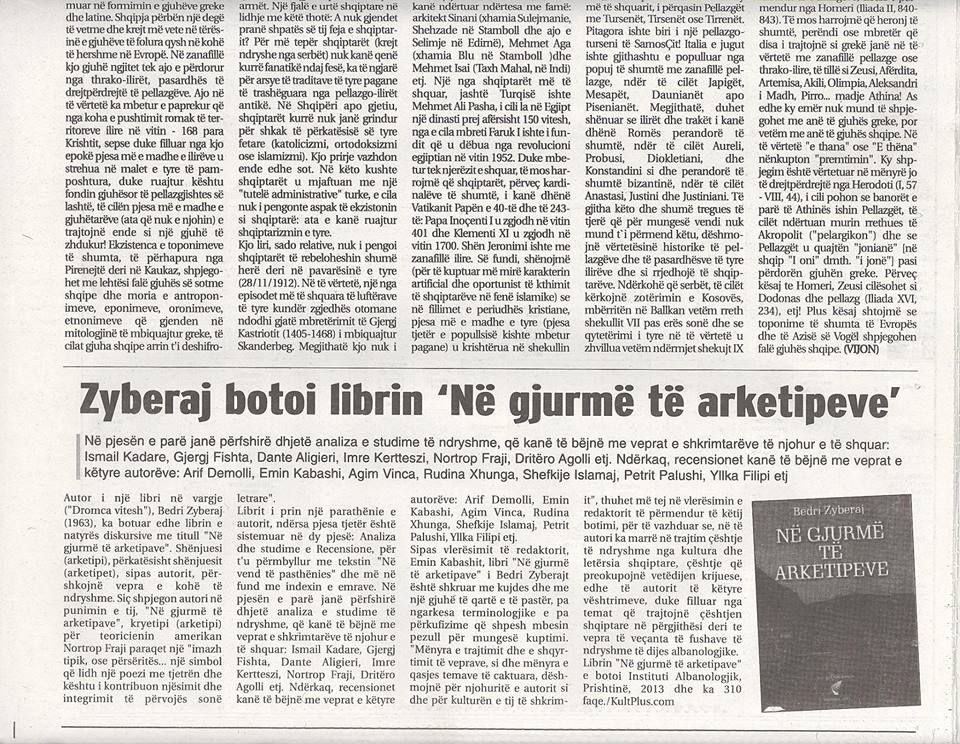
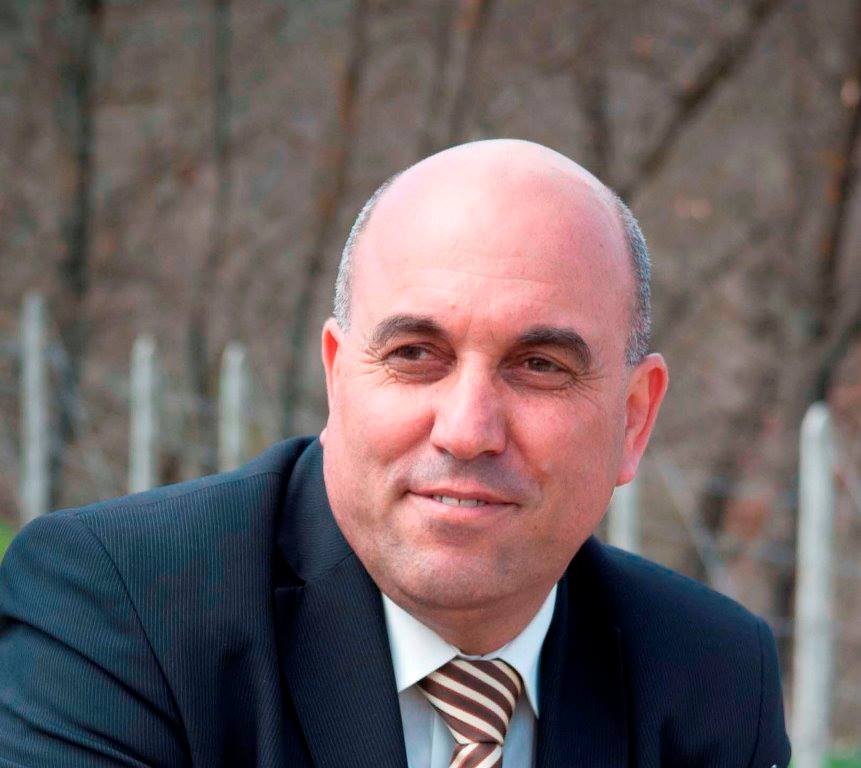
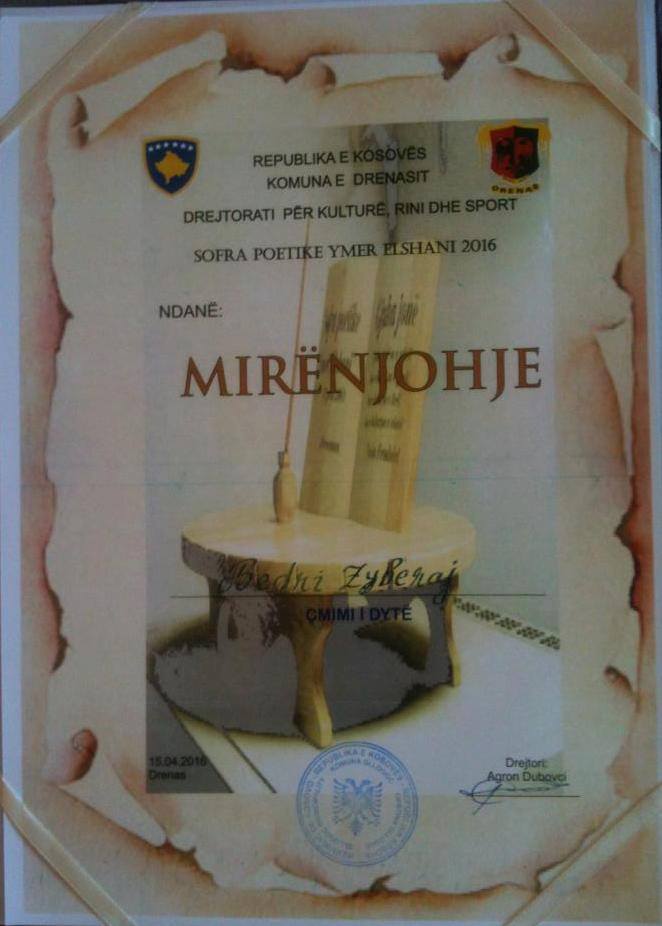
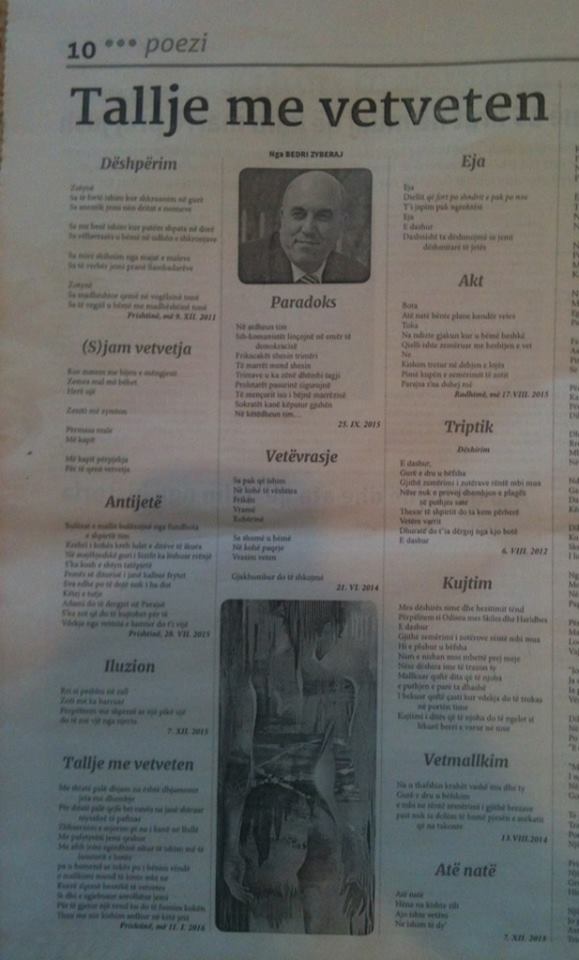
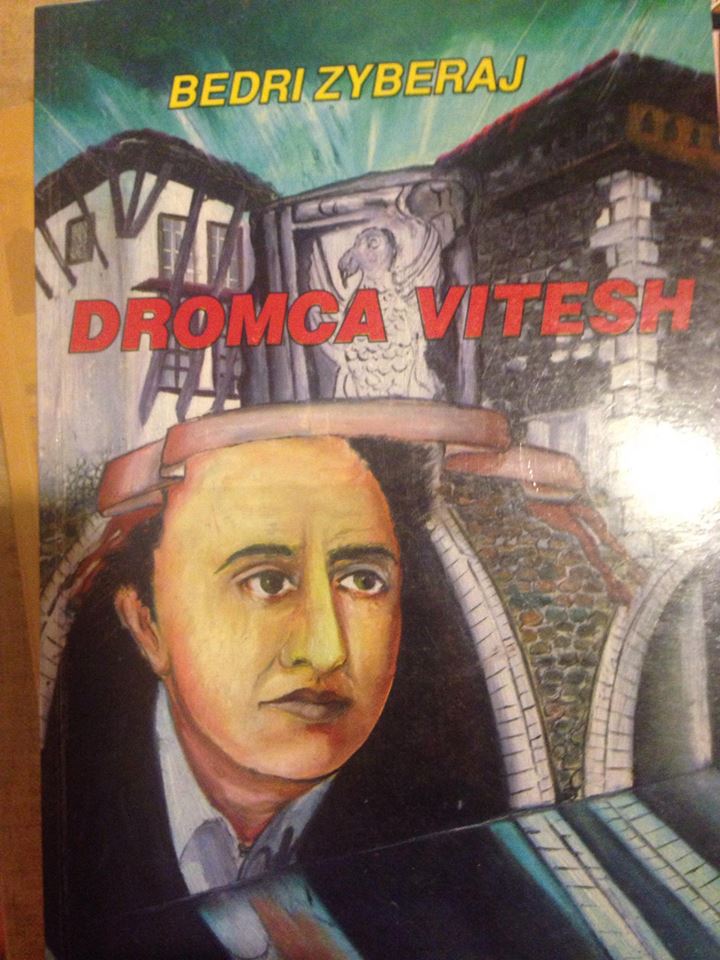
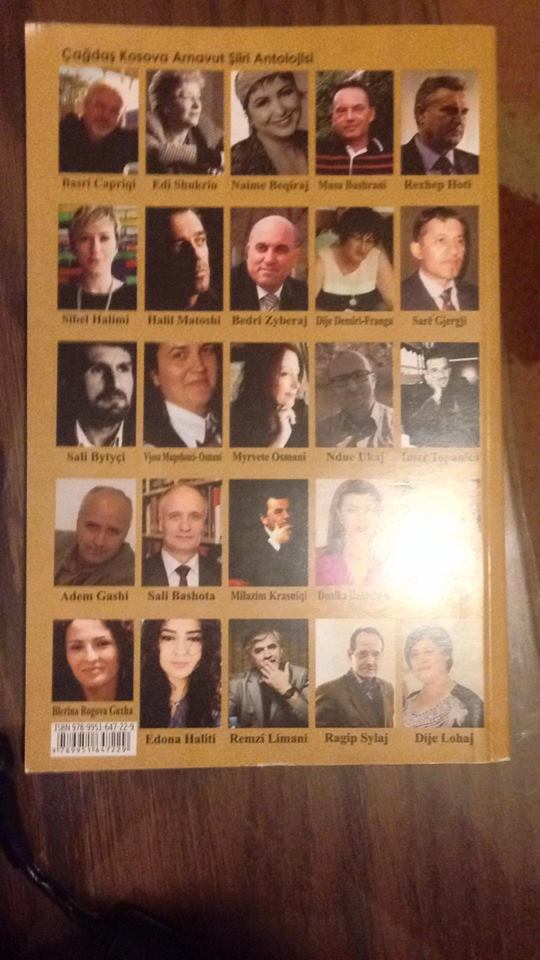
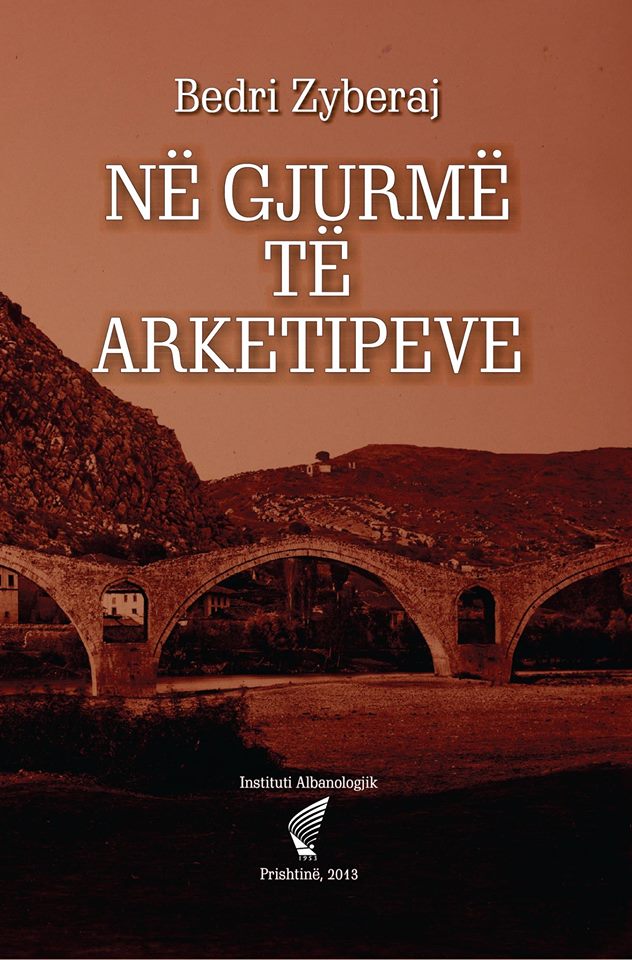
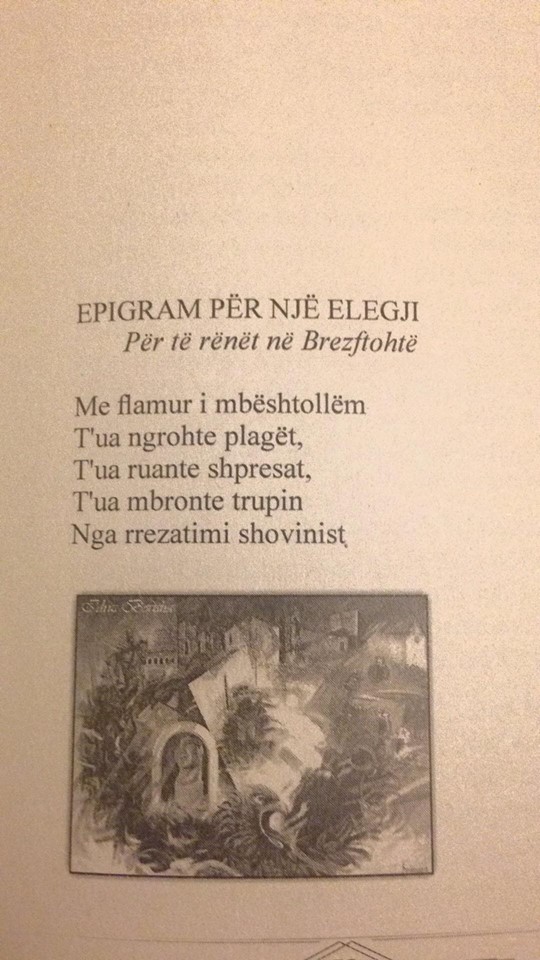
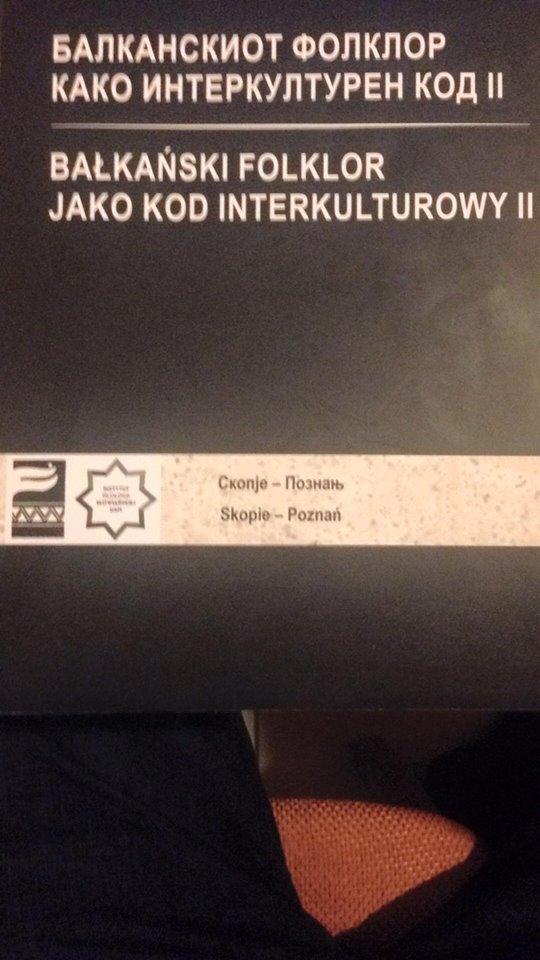
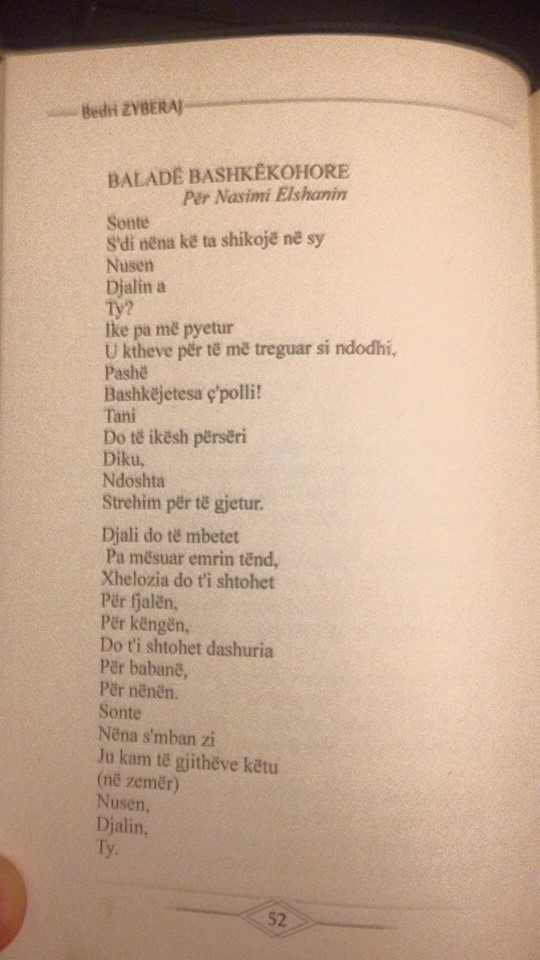
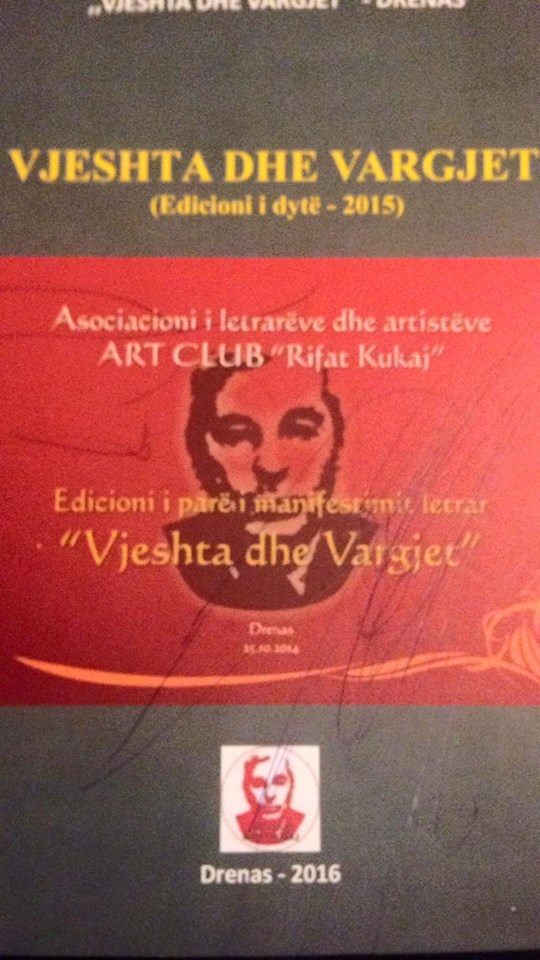
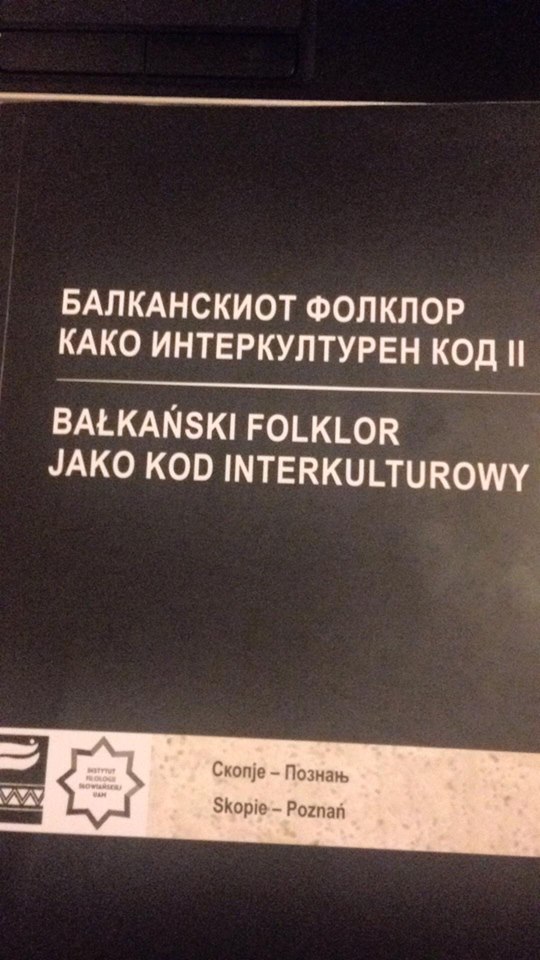
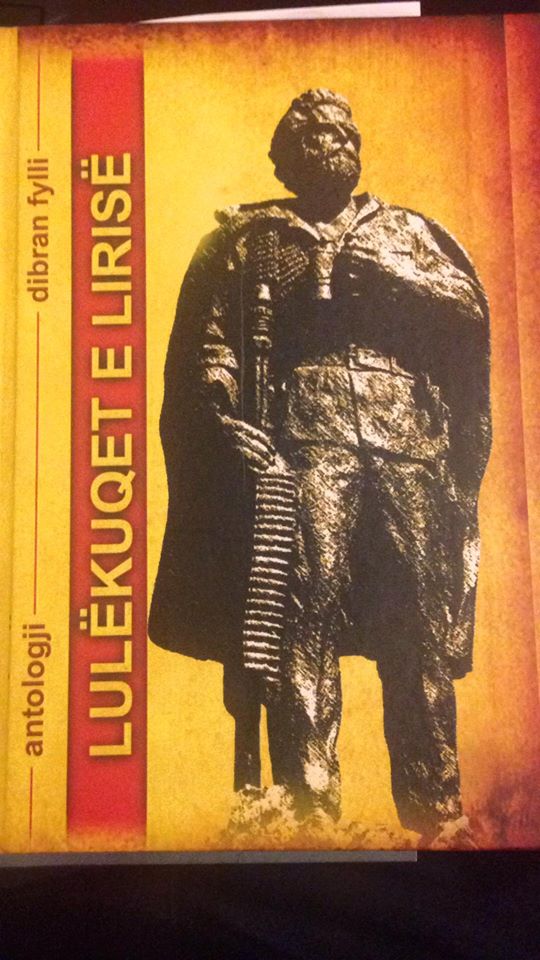
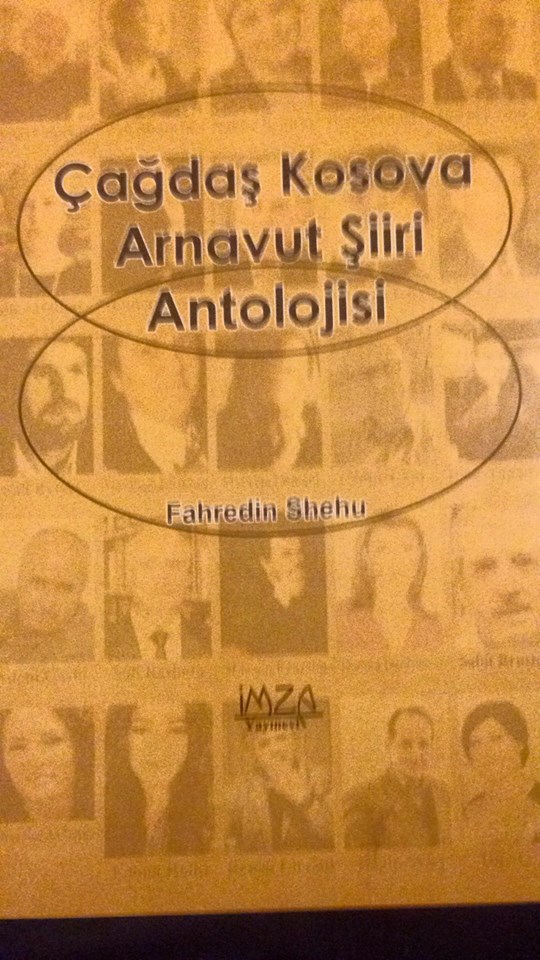
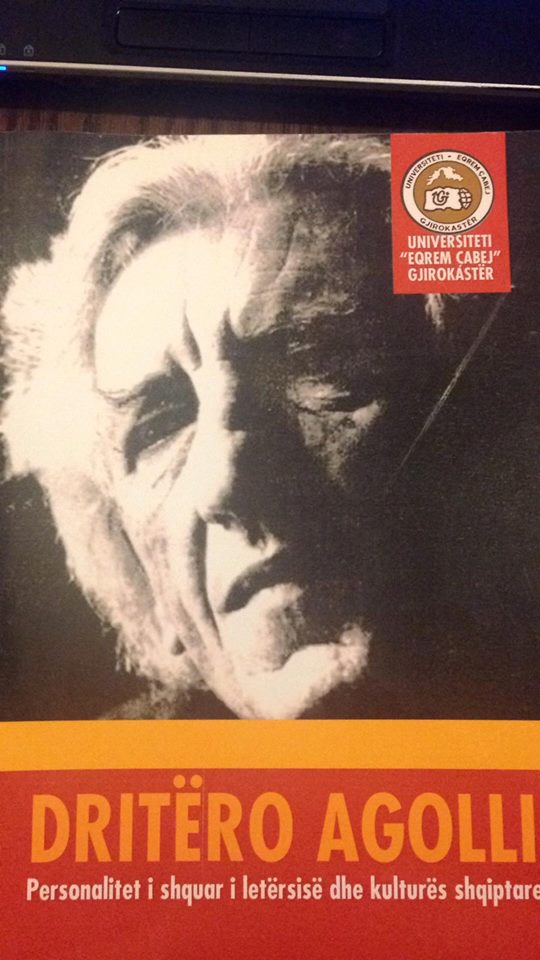
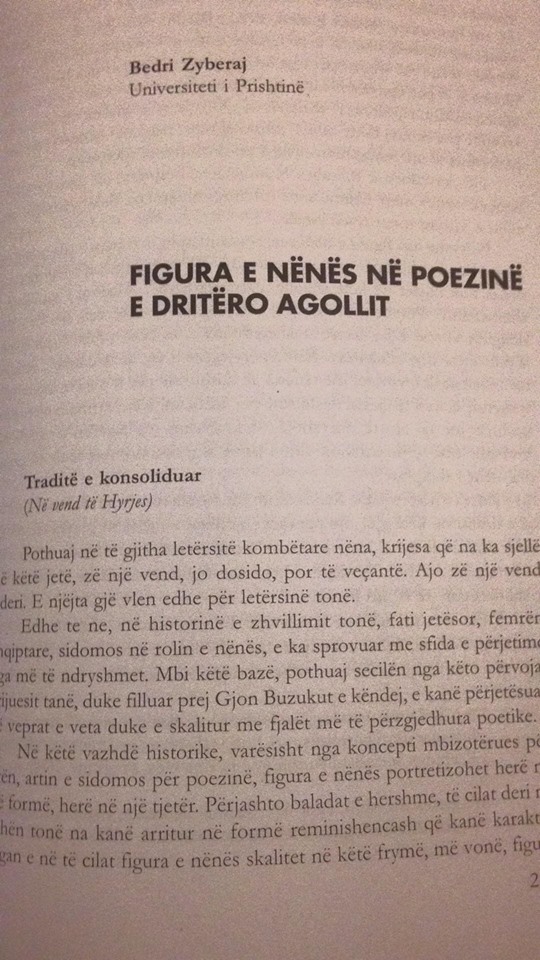
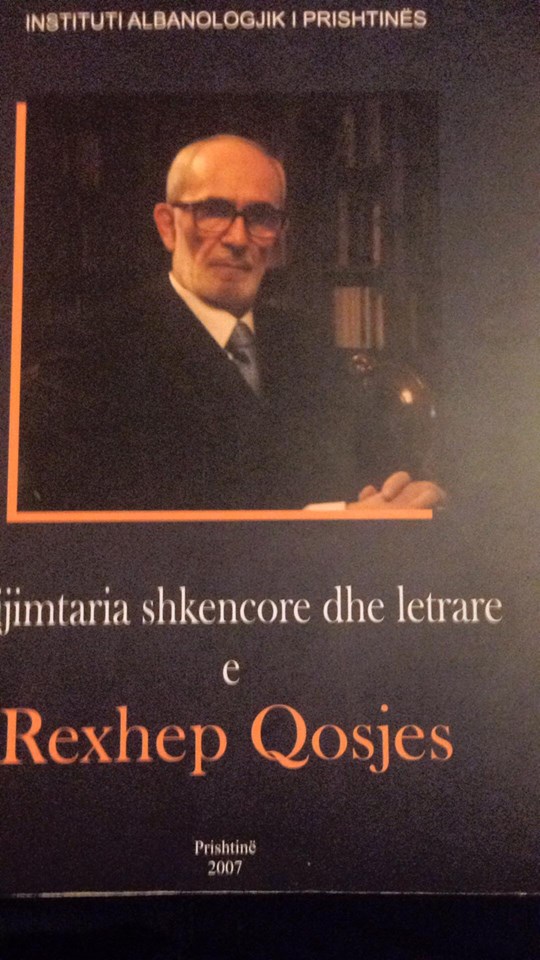
http://www.alfikre.com/articles.php?id=18951
http://www.innerchildpress.com/the-year-of-the-poet.php


